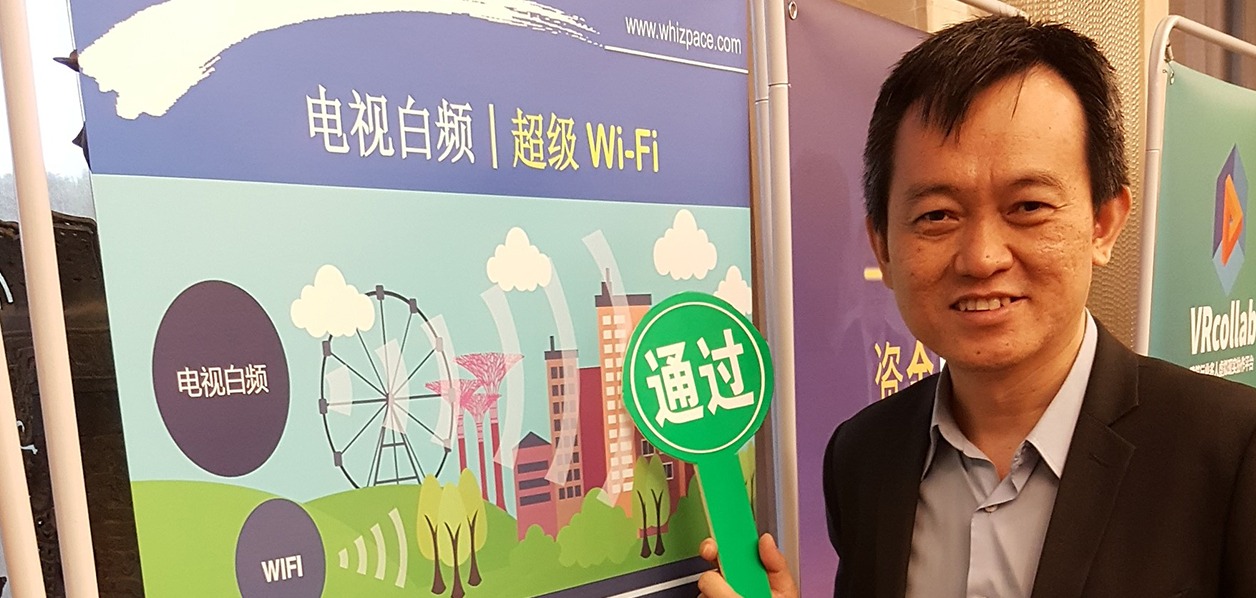Enhancing connections through open innovation
Tapping local and overseas partnerships, Whizpace optimises wireless communication networks with innovative TV white space technology to create a more interconnected world.
Serving an estimated 4.66 billion active internet users globally, wireless networks transfer data across geographical boundaries and help the online community to stay connected. These mobile networks occupy a set range in the radio spectrum, alongside TV and radio stations, maritime communication and aeronautical navigation. All have their own frequency bands to prevent overlapping signals, like how separate lanes on the road are allocated for private vehicles, buses and cyclists.
However, with increasing internet traffic and more devices in the mix, wireless networks can run out of space, leading to spotty signals and slow transmission. To address this spectrum crunch, Agency for Science, Technology and Research (A*STAR) spin-off Whizpace is harnessing innovative TV white space (TVWS) or Super Wi-Fi technology. By repurposing empty bands in the spectrum left by unused broadcast channels, this technology offers stable wireless networks with high data transmission rates over long distances.
In an interview with IPI, Whizpace Founder and CEO Oh Ser Wah shares how open innovation and global collaborations have enabled their connectivity solutions to reach more users.
1. What is the core competency of Whizpace?
Whizpace solves the spectrum crunch issue by dynamically using vacant TV spectrum for wireless communications. Our Super Wi-Fi technology transmits over long distances and penetrates through obstacles, thus significantly lowering costs and speeding up deployment of wireless networks. Our solutions can bring internet access to remote areas and enable Internet of Things users to have their own private networks with enhanced security.
2. Was there a turning point in Whizpace’s history that convinced you that open innovation was the right way to go?
More than a decade ago, nobody knew whether TVWS technology would work. The United States Federal Communications Commission (FCC) therefore decided to conduct a trial to verify the viability of this technology. We were invited to participate in this trial together with other organisations. The coopetition—meaning cooperation among competitors—eventually paid off. The FCC was happy with the outcome of the trial and devised the world’s first TVWS regulation later that year.
3. How has open innovation benefitted Whizpace thus far?
Knowing that we do not have the resources to work on everything by ourselves, Whizpace has collaborated with many partners including institutes of higher learning (IHLs), integrated circuit design houses, software companies and manufacturers. With this, we have produced the world’s smallest TVWS module for just a fraction of the cost that would be incurred if we were to start in-house product development from scratch.
4. How do you encourage a culture of open innovation at Whizpace? How has this helped the company capture rising global opportunities?
One of Whizpace’s core values is teamwork as we believe that it takes a team to deliver success. Beyond our internal team, we also work with researchers from A*STAR and overseas partners, leveraging their expertise to create better solutions. Our joint projects with companies from Israel and the Netherlands have opened doors for us in Europe, while we in turn connect them to opportunities in Asia. These partnerships go beyond product development to business development.
5. What are some lessons that you have learnt in the process of engaging in open innovation with overseas partners?
Differences in cultures, working styles and time zones are inevitable when working with overseas partners. To ensure efficient collaboration, we adjusted our meeting times and learned to understand our partners better. Additionally, the exposure to diverse cultures, styles and views has helped us to see things from different perspectives, sparking new ideas that we had not previously thought of. Through these overseas collaborations, we became used to conducting online meetings and were able to adjust to work-from-home arrangements during the COVID-19 pandemic.
6. How has IPI enhanced Whizpace’s open innovation journey?
IPI has been very supportive of our innovation journey. Our technology that is published in IPI’s Innovation Marketplace has led to enquiries about our solutions, generating interest from potential customers and partners locally and abroad. Moreover, IPI’s wide network has also helped with securing overseas collaborations, such as our EUREKA project with a partner from the Netherlands.

